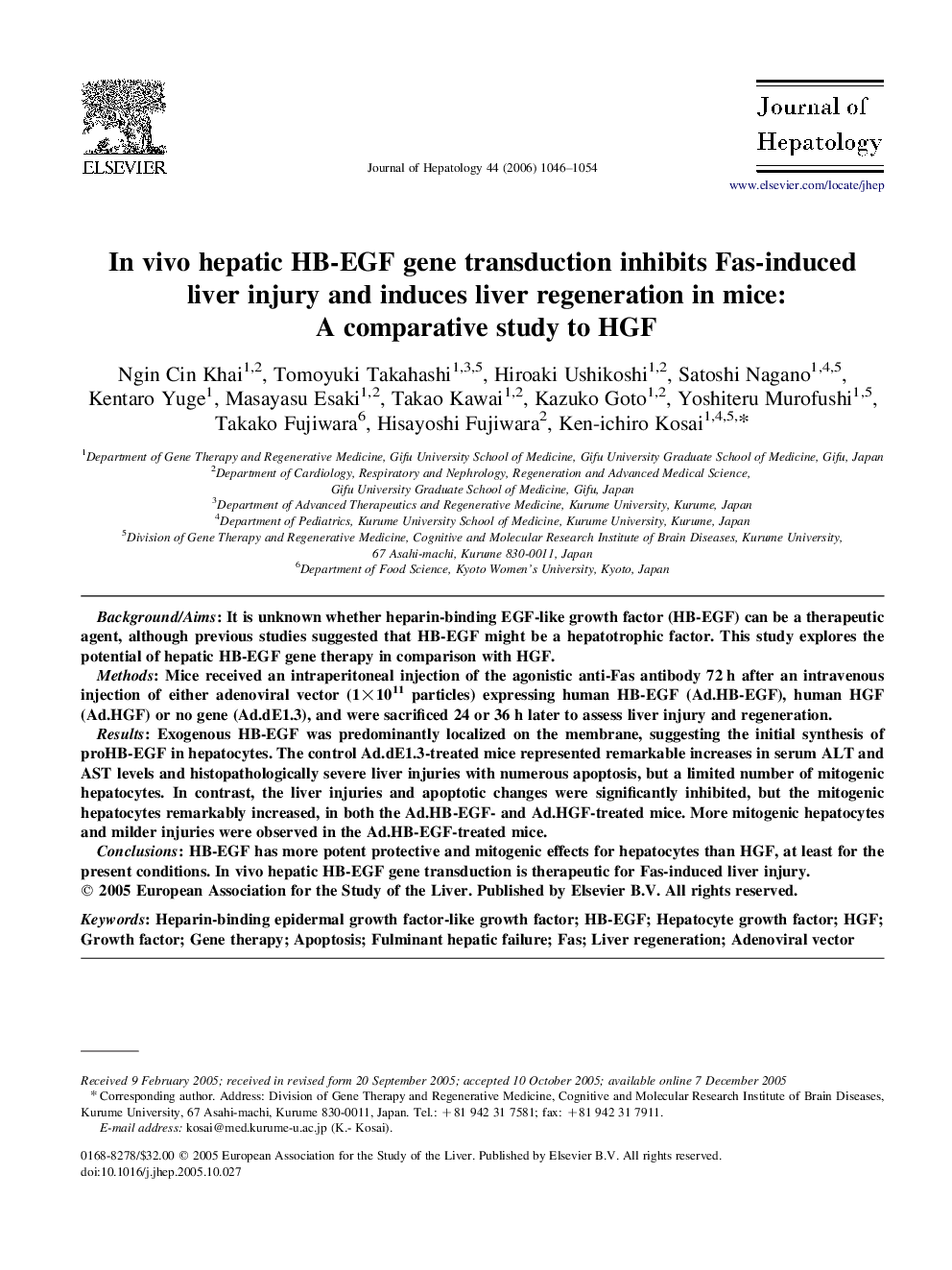| Article ID | Journal | Published Year | Pages | File Type |
|---|---|---|---|---|
| 3315614 | Journal of Hepatology | 2006 | 9 Pages |
Background/AimsIt is unknown whether heparin-binding EGF-like growth factor (HB-EGF) can be a therapeutic agent, although previous studies suggested that HB-EGF might be a hepatotrophic factor. This study explores the potential of hepatic HB-EGF gene therapy in comparison with HGF.MethodsMice received an intraperitoneal injection of the agonistic anti-Fas antibody 72 h after an intravenous injection of either adenoviral vector (1×1011 particles) expressing human HB-EGF (Ad.HB-EGF), human HGF (Ad.HGF) or no gene (Ad.dE1.3), and were sacrificed 24 or 36 h later to assess liver injury and regeneration.ResultsExogenous HB-EGF was predominantly localized on the membrane, suggesting the initial synthesis of proHB-EGF in hepatocytes. The control Ad.dE1.3-treated mice represented remarkable increases in serum ALT and AST levels and histopathologically severe liver injuries with numerous apoptosis, but a limited number of mitogenic hepatocytes. In contrast, the liver injuries and apoptotic changes were significantly inhibited, but the mitogenic hepatocytes remarkably increased, in both the Ad.HB-EGF- and Ad.HGF-treated mice. More mitogenic hepatocytes and milder injuries were observed in the Ad.HB-EGF-treated mice.ConclusionsHB-EGF has more potent protective and mitogenic effects for hepatocytes than HGF, at least for the present conditions. In vivo hepatic HB-EGF gene transduction is therapeutic for Fas-induced liver injury.
